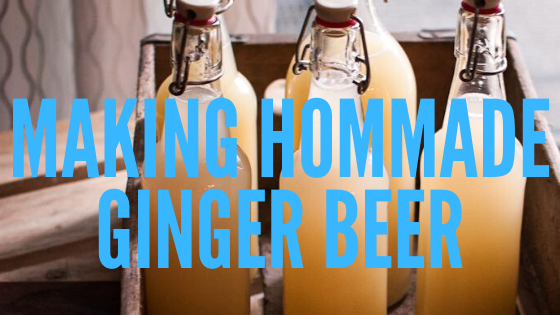A Guide to Brewing Alcoholic Ginger Beer From Simple Starter to Craft Creation
Despite what many recipe sites on the internet may claim, there is a significant difference between ginger ale and ginger beer. While ginger ale is simply carbonated water flavored with ginger syrup, true ginger beer is a more complex, fermented drink made from ginger spice, yeast, and sugar. This results in an alcoholic beverage that boasts a unique, spicy, and deeply satisfying flavor profile that cannot be replicated with soda water.
The history of ginger beer dates back to 18th-century England, where it was first brewed as a fiery, alcoholic alternative to traditional beer. Its popularity spread throughout the British Empire, becoming a staple in the Caribbean and beyond. If you're interested in making your own authentic ginger beer, the process can be wonderfully simple or as complex as you desire. At its core, you'll ferment a mixture of water, yeast, ginger, and sugar. This guide will take you from a basic "no-boil" method to a more traditional brewing process that gives you ultimate control over the final product.
Method 1: The Simple "No-Boil" Approach
This DIY recipe is the quickest way to get started and will make approximately 5 gallons of hard ginger beer. Simply add the ingredients to your water in a clean, sanitized fermenter. You'll want to shred the ginger in a food processor to maximize surface area for flavor infusion. After juicing your limes and orange, add everything to the fermenter with your chosen yeast.
For this method to succeed, you need to "feed" the brew a little sugar twice a day for three days. This provides a steady food source for the yeast. The more you do this, the higher the ABV your brew will be. It helps to measure specific gravity before each feed so you know how much sugar remains. Consistent feeding also maintains yeast health and prevents high osmotic pressure (which can shock and stall the yeast) that would occur if you added all the sugar at once.
Recipe Ingredients:
- 2 kg ginger, finely grated or processed
- 1 kg brown sugar
- ½ kg castor sugar
- 2 limes, juiced
- 1 orange, juiced
- 1 teaspoon of vanilla extract
- 3 cinnamon sticks
- An ‘ale’ style yeast (like Safale US-05)
Method 2: The Traditional "Brew-Day" Process
If you want to 'brew' your ginger beer in a more traditional beer-making sense, this process gives you far more control over clarity, flavor extraction, and final stability.
The Science of the Boil
Brewing ginger beer starts with the raw materials. The ginger root holds active compounds like gingerol and shogaol that give its sharp, spicy bite. When these oils mix with hot water, they release aromatic phenols. A controlled boil is crucial; maintaining a temperature near 100°C (212°F) for sixty minutes extracts the maximum flavor without introducing harsh bitterness. This boil also sterilizes the wort, ensuring your chosen yeast has no competition.
The Process
Bring 5 gallons of water to a boil in your brewing kettle. Once boiling, add your shredded ginger and sugar. You can put the ginger in a mesh bag to reduce sediment in the final product. Boil this "ginger wort" for about 60 minutes. While you're boiling, take the time to sanitize your fermenter with a product like Star San.
If you are serious about clarity, add one Whirfloc tablet (a form of Irish moss) in the last 15 minutes of the boil. This will help proteins and other haze-forming compounds clump together and fall out of suspension.
After the boil, cool the wort as rapidly as possible using a wort chiller. This "cold break" further improves clarity. Before pitching, aerate your wort by shaking the fermenter vigorously or using an aeration stone. Yeast needs oxygen for the initial growth phase (respiration) to build strong cell walls before it switches to anaerobic fermentation.
When your wort is at room temperature (around 20-22°C or 68-72°F), pitch your yeast. It is critical that the wort is cool, as hot wort will kill the yeast. Let it ferment for at least a week, then check your gravity. Once stable, you can proceed to bottling.
Bottling, Pasteurization, and Carbonation
Many a brewer has learned the hard way about over-carbonation, gushers, and exploding glass bottles. This happens when there is too much residual sugar for the yeast to consume in a sealed environment. To bottle for long-term storage, you can kill the yeast to stop fermentation.
To do this, bring a large pot of water to 180°F (82°C), turn the heat OFF, and carefully place your filled and capped bottles into the hot bath. Let them stand for 10-15 minutes. This pasteurizes your ginger beer. At this temperature, most brewing yeasts reach a D-value (the time required to reduce the population by 90%) of under 5 minutes, so 15 minutes gives a strong safety margin. Your brew is now shelf-stable but will not carbonate further. If you want carbonation without pasteurizing, you must first ensure fermentation is 100% complete by taking stable hydrometer readings, and then add a precise amount of priming sugar before bottling.
The Ginger Bug: A Natural Fermentation Starter
For a truly traditional approach, you can create a "ginger bug." This is a wild fermentation starter, or SCOBY (Symbiotic Culture Of Bacteria and Yeast), made from the natural microorganisms present on the skin of the ginger root.
- Add 20 grams of grated ginger (skin on) and 30 grams of sugar to a mason jar. Add 300ml of dechlorinated water and cover with cheesecloth.
- For the next 2-4 days, "feed" the bug daily with the same amount of ginger and sugar until you see active bubbling. This indicates that wild yeasts (*Saccharomyces*) and beneficial bacteria (*Lactobacillus*) have colonized the starter.
- Once active and smelling pleasantly spicy and yeasty, you can use the liquid from your bug (straining out the solids) to start your main batch of ginger beer instead of using commercial yeast.

